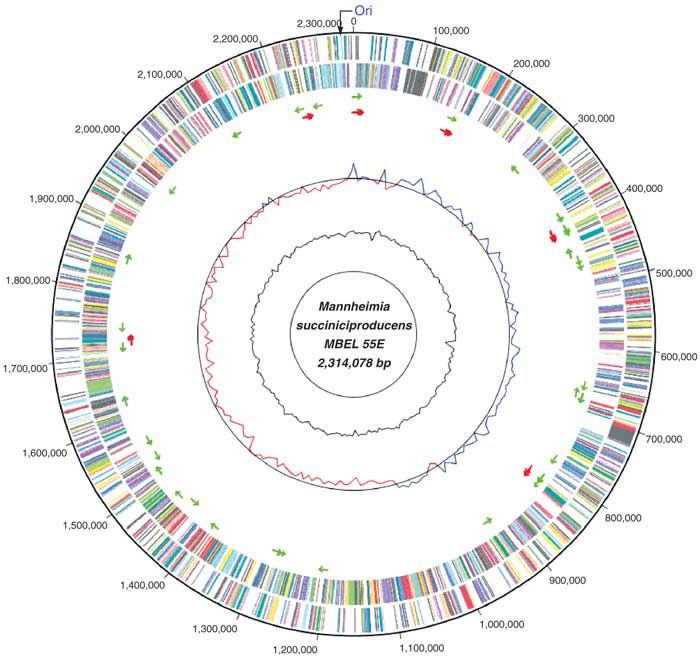Corynebacterium diphtheriae
A Microbial Biorealm page on the genus Corynebacterium diphtheriae
Classification
Higher order taxa
Species
|
NCBI: Taxonomy |
Corynebacterium diphtheriae
Description and significance
- WORK IN PROGRESS*
C. diphtheriae is a gram-positive, nonmotile, rod-shaped bacteria belonging to the order Actinomycetales, which are typically found in soil, but also have pathogenic members such as streptomyces and mycobacteria. C. diphtheriae is best known for causing the disease Diphtheria, which results from production of Diphtheria toxin in conjunction with infection by a bacteriophage.
Describe the appearance, habitat, etc. of the organism, and why it is important enough to have its genome sequenced. Describe how and where it was isolated. Include a picture or two (with sources) if you can find them.
Genome structure

Image from Wishart Research Group, University of Alberta
The genome of C. diphtheriae contains 2,488,635 nucleotides, 87% of which are coding. This single circular chromosome contains 2,389 genes from which 2,272 proteins are coded. It contains no plasmids. There are 69 structural RNA, 15 coding for 5S, 23S, and 16S Ribosomal RNA, and 54 coding for the 20 amino acid tRNA molecules. The GC content is 53%, though it is not evenly distributed - it has higher proportion of GC pairs near the origin of the plasmid (around 55%), compared to the region near the terminus (49%)
The genome contains what are termed Pathogenicity Islands (PAIs). These PAIs, of which C. diphtheriae has 13, contain local genetic anomalies in nucleotide composition or frequency, and many are closely associated with patches that code for tRNA. These PAIs code for the majority of fimbrial and fimbria-related genes, and iron-uptake systems which produce siderophores and lantibiotics. The ability to acquire iron allows C. diphtheriae to produce the Diphtheria toxin, which gives the bacteria its pathogenicity.
Cell structure and metabolism
- WORK IN PROGRESS*
Describe any interesting features and/or cell structures; how it gains energy; what important molecules it produces.
Ecology
- WORK IN PROGRESS*
Describe any interactions with other organisms (included eukaryotes), contributions to the environment, effect on environment, etc.
Pathology
- WORK IN PROGRESS*
How does this organism cause disease? Human, animal, plant hosts? Virulence factors, as well as patient symptoms.
Application to Biotechnology
- WORK IN PROGRESS*
Does this organism produce any useful compounds or enzymes? What are they and how are they used?
Current Research
- WORK IN PROGRESS*
Enter summaries of the most recent research here--at least three required
References
- WORK IN PROGRESS*
Edited by student Rachael Spradley of Rachel Larsen
